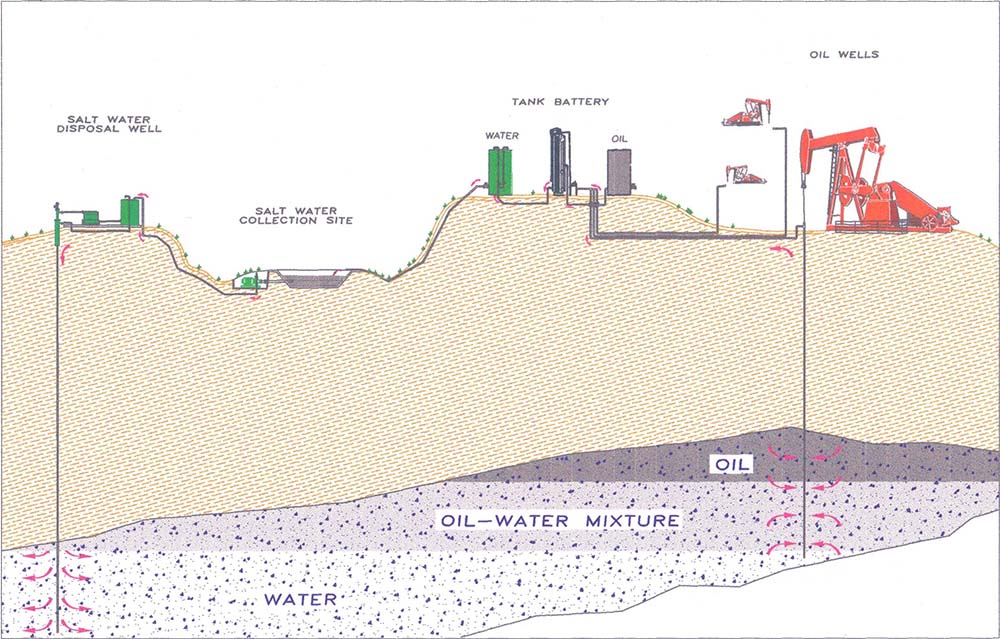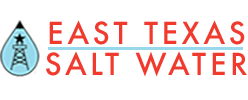About US
OUR APPROACH
The East Texas Salt Water Disposal Company (ETSWD) has been a critical element for the continued production of the East Texas Field for over 80 years. By disposing the Field’s produced water at a very low cost, many wells have been able to remain economic to produce, thus extending the life of the marginal wells. The business model is quite unique. During 1940-41, several meetings were held with both large and small operators to address two issues: stopping pollution and maintaining bottom hole pressure in the Woodbine reservoir. The Texas Railroad Commission was critically instrumental in forming the Company by establishing various rulings and incentives to make the Company feasible. The Company is governed by a board of directors. Most of the shares are owned by our customers. The business model is to operate much like a non-profit to keep the disposal expenses as low as possible.

OUR HISTORY
- Dad Joiner’s discovery well in 1930 was drilled on the extreme eastern side of the East Texas Field. Wells drilled soon after were located down-dip to the west and immediately began producing salt water.
- By the latter part of 1937 salt water production had reached 100,000 barrels per day (BPD) and by April 1941 had exceeded 300,000 BPD.
- Initially, the salt water was simply released onto the land and into the streams. Secondly, there was an alarming decrease in bottom hole pressure, which if allowed to continue, would reduce the ultimate oil recovery by over two billion barrels.
- It was decided, the best method was to return the salt water to the Woodbine formation from which it was produced. This would address both primary concerns by stopping pollution and maintaining the bottom hole pressure.
- In 1939, there were eight disposal systems in operation. They were owned by the large oil companies with extensive holdings in the field. Smaller operators were not able to drill salt water disposal wells and install expensive treating facilities because the volume of salt water produced by them did not justify the expense.
- During 1940-41, a series of meetings were held among both large and small operators in the field. It was agreed that the problem could be best addressed by the organization of one disposal company to serve the entire field. The Texas Railroad Commission was critically instrumental in the creation of East Texas Salt Water Disposal Company (ETSWD) by establishing various rulings and incentives, which made the Company feasible. Consequently, ETSWD was organized and received its Charter from the State of Texas on January 20, 1942, as a “C” corporation.
- ETSWD was financed through the issuance of 20,000 shares of stock to 279 stockholders. Construction was launched on a field-wide program for the collection, transportation and disposal of salt water produced in the field. The Company was not organized merely to serve its stockholders. Rather, it would serve all operators in the field without discrimination, giving no preferential treatment to stockholders, or any other person, company or group. This concept has been maintained throughout the life of the Company.
- The creation of ETSWD was intended as a benefit to the entire East Texas community, not just the oil producers. As a result, ETSWD is one of the oldest public environmental protection companies in existence.
- Although it is a “C” corporation, ETSWD has never attempted to generate a financial profit. The Company maintains only enough assets to conduct its daily business and cover its future legal obligations. No dividends have ever been paid to the stockholders. These practices have helped create many jobs and maintain an important tax base in East Texas.
- The first barrel of salt water disposed by ETSWD was on October 1, 1942. The volume has increased from a modest beginning of 111,000 barrels per day average for the year 1943, to a peak of 1,160,000 barrels per day average in November 2014. Today ETSWD injects an average of 850,000 BPD.
- ETSWD currently operates 87 injection wells, 105 collection points and over 650 miles of active pipelines located within a 200 square mile area.
